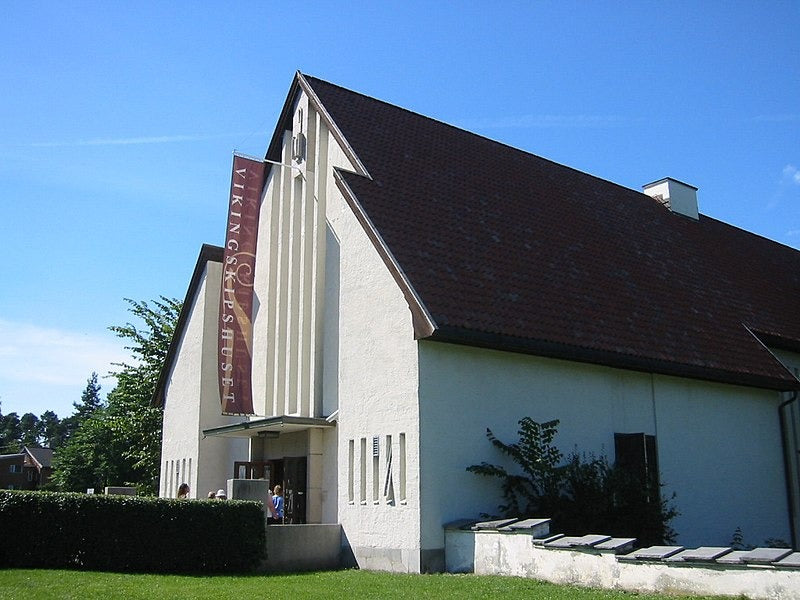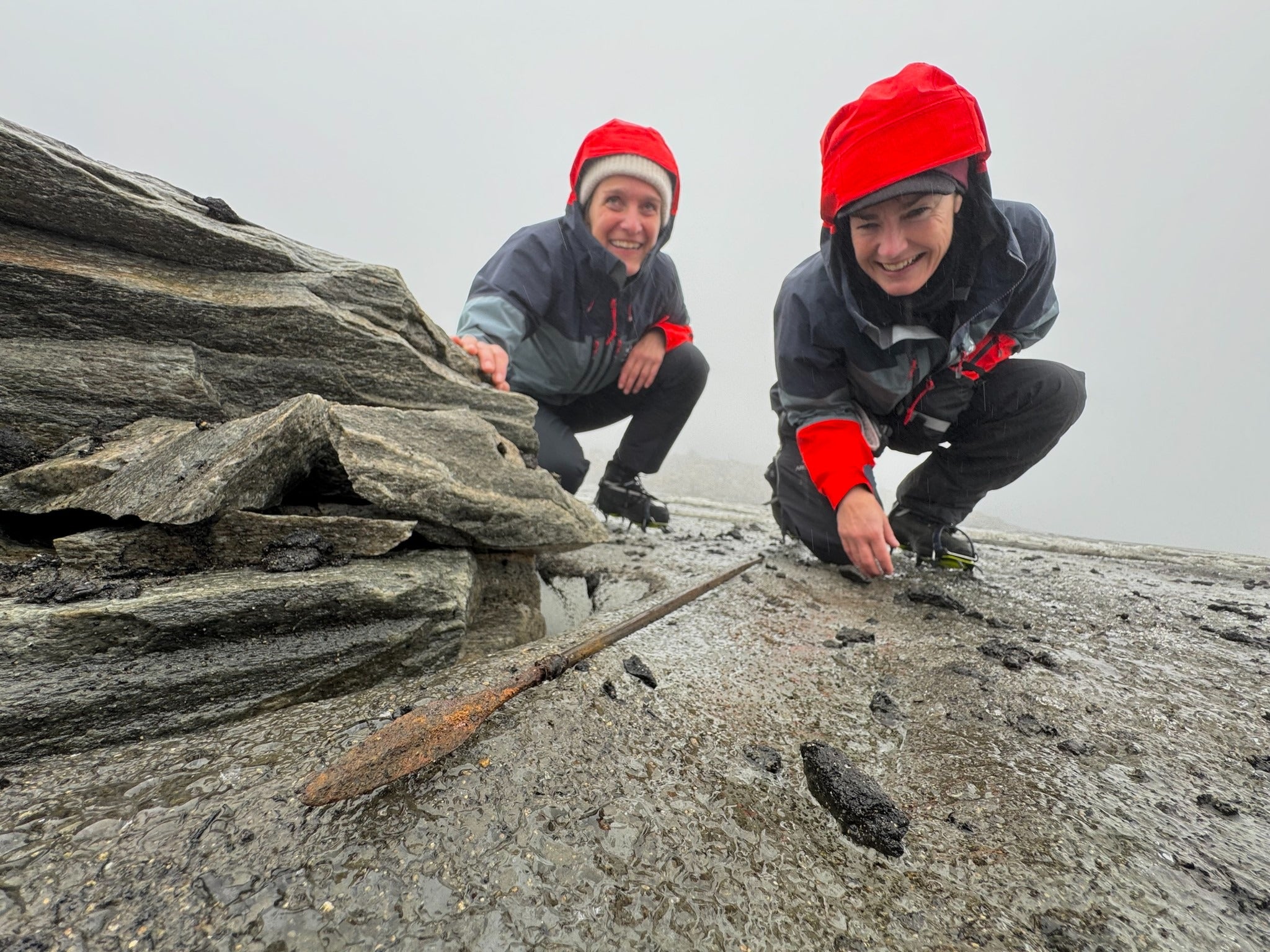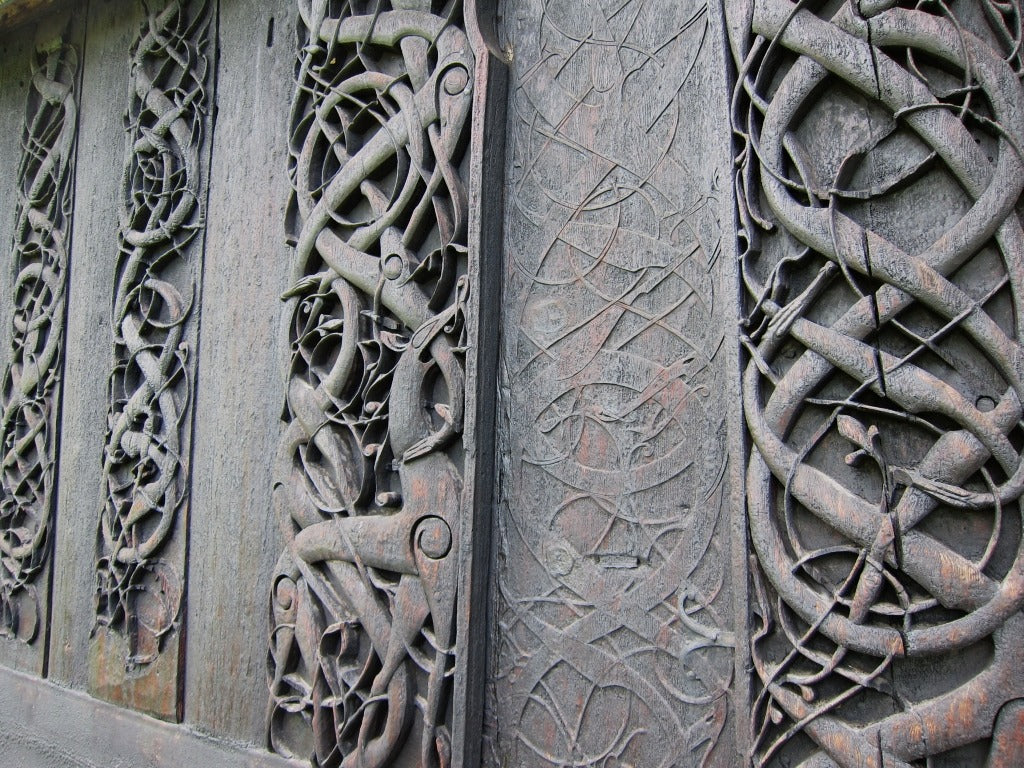
New Viking Museum in Oslo Faces Delays and Budget Cuts
In the picturesque setting of Bygdøy, Oslo, a monumental project is unfolding that promises to revolutionize our understanding and experience of Viking history. The Museum of the Viking Age, an ambitious extension of the former Viking Ship Museum, is set to become a world-class institution showcasing Norway's rich Viking heritage. As we delve into the details of this grand undertaking, we uncover a tale of challenges, innovations, and the relentless pursuit of preserving history for future generations.
A New Home for Ancient Treasures
The new Museum of the Viking Age is not just an expansion; it's a reimagining of how we interact with Viking history. This state-of-the-art facility is being built as an extension of the iconic Viking Ship Museum, a site that has captivated visitors since 1926. The project aims to address the limitations of the old museum, which was designed to handle 40,000 visitors annually but welcomed more than half a million in recent years before closing for rebuilding.
The new museum promises to be a spectacular venue where visitors can get up close to the world's finest collection of Viking Age artifacts. Plans include displaying 5,400 unique artifacts in state-of-the-art exhibitions, giving these priceless relics the space and facilities they truly deserve. Unlike its predecessor, which focused on four ship burials, the new museum will provide a comprehensive picture of the entire Viking Age, with Norway's finest cultural heritage, the Viking ships, as the main attraction.
The Journey to 2027: Delays and Challenges
While the excitement for the new museum is palpable, the road to its completion has been fraught with challenges. Originally slated for an earlier opening, the current plan now aims for a late 2027 debut. This delay stems from a complex web of factors that have impacted the project's timeline.

The construction site as of 2024 (Photo: Statsbygg).
In May 2022, the Government decided to reduce the project's cost, resulting in a cut of approximately 250 million NOK. This decision has led to significant delays and compromises in the museum's design and functionality. Additionally, the groundbreaking work required to secure the ships and sleds against damage and vibrations during construction has proven more time-consuming than anticipated.
The project's timeline is also influenced by ongoing economic considerations and political processes, adding layers of complexity to the already challenging task of creating a world-class museum.
Preserving the Past: A Monumental Task
One of the most critical aspects of the museum's construction is the preservation of its most precious artifacts: the Viking ships and sleds. These irreplaceable treasures, too fragile to be moved, remain in the original building under extraordinary protection measures.
The conservation and collection management specialists at the museum are working tirelessly with Statsbygg and external experts to ensure the safety of these priceless artifacts. The ships are secured in enormous steel rigs and placed on air cushions to lead vibrations away from them during the construction process. Meanwhile, the sleds, deemed too fragile to be moved, have been relocated to a climate-controlled room furthest from the construction site, where they are closely monitored.
This innovative approach to preservation showcases the blend of ancient history and cutting-edge technology that defines the new museum's ethos.
The Price of Progress: Compromises and Challenges
The budget reduction of 250 million NOK has led to some painful compromises in the museum's design and functionality. Key features that have been cut from the current plan include educational spaces for children, an outdoor park area with a playground, a lecture hall, public research laboratories, and a hall for temporary exhibitions.
Furthermore, the restaurant will be built without a commercial kitchen, and there are no provisions for staff offices or facilities. The technical infrastructure in the old part of the museum complex has also been removed from the project scope.
These cuts pose significant challenges, particularly in terms of artifact handling and the overall visitor experience. The removal of facilities for handling artifacts introduces a considerable risk, as items needing conservation must now be transported between Bygdøy and the storage facility at Økern instead of being treated on-site.
The museum is actively seeking alternative funding sources, including sponsorships, to reinstate these crucial elements. However, as the project progresses, it becomes increasingly complicated and potentially more expensive to reintegrate these functions.
A Museum for the Future

Despite the setbacks, the vision for the Museum of the Viking Age remains grand and inspiring. It promises to be more than just a display of artifacts; it will be a comprehensive journey through the Viking Age, offering spectacular architecture, engaging experiences for all ages, exciting events, and rotating exhibits.
The new museum will provide a broader perspective on Viking history beyond the famous ship burials, making it a true cultural landmark for Norway and the world. It aims to be a museum for all of Norway, showcasing artifacts and knowledge from a central era in the country's history.
The Waiting Game: Experiencing Viking History Now
While the new museum takes shape, Viking enthusiasts can still get their fix of Norse history. The Historical Museum in Oslo's city center offers the VÌKINGR exhibition, showcasing exquisite artifacts from the Norwegian Viking Age. This temporary solution allows visitors to continue engaging with Viking history while anticipating the grand opening of the new museum.
Looking Ahead: The Promise of 2027
As we anticipate the grand opening of the Museum of the Viking Age, we're reminded of the enduring fascination with Norse culture and the importance of preserving our shared heritage. This new institution promises not just to house artifacts, but to bring the Viking Age to life for a new generation of visitors.
The Museum of the Viking Age represents a significant investment in Norway's cultural heritage and tourism industry. Despite the challenges and compromises faced during its development, the museum is poised to become a world-class attraction that will educate, inspire, and captivate visitors from around the globe.
As we eagerly await the completion of this ambitious project, one thing is clear: the Museum of the Viking Age is set to redefine our connection to the past, offering an unparalleled journey into the heart of Viking culture and history. When it finally opens its doors in 2027, it will stand as a testament to Norway's commitment to preserving and showcasing its rich Viking heritage for generations to come.
References
Museum of the Viking Age. (n.d.). Everything you need to know about the Museum of the Viking Age. Retrieved from https://www.vikingtidsmuseet.no/english/norways-new-world-attraction/index.html
"Viking Ship Museum at Bygdøy" By Kjetil Bjørnsrud - Own work, CC BY 2.5, https://commons.wikimedia.org/w/index.php?curid=776845
"Oseberg Ship VI" by A.Davey is licensed under CC BY-NC-ND 2.0.








